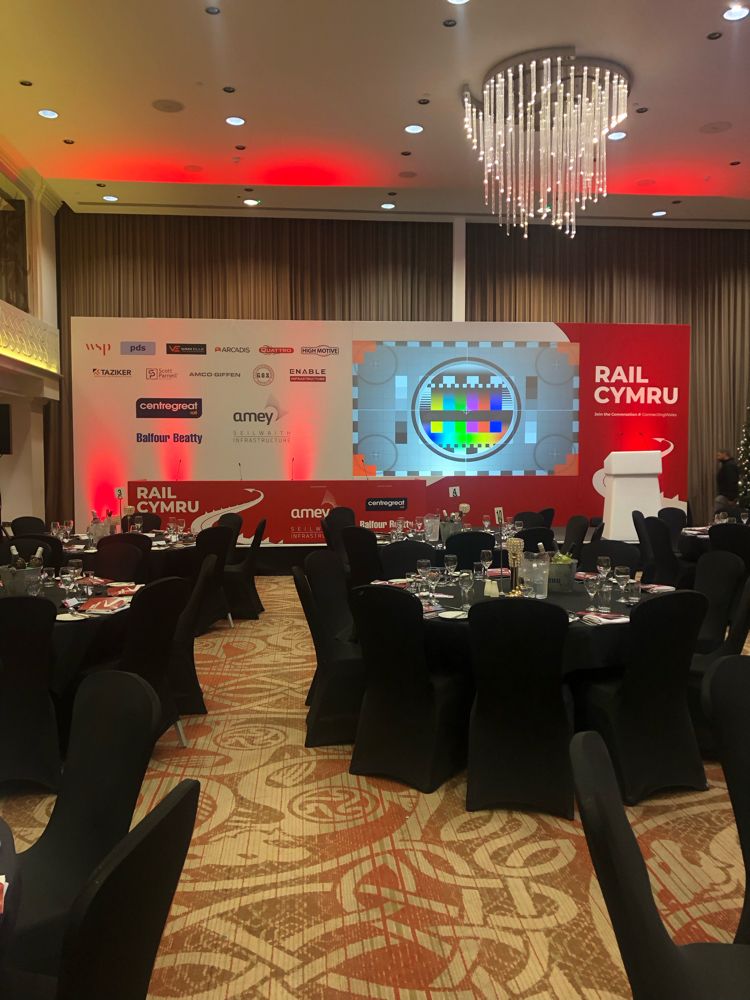After the Rail Cymru Dinner, Quadrant Transport highlights the main takeaways from the event and discusses how the rail industry can deliver for its passengers.
The dinner began with a panel discussion on delivering for the passengers. It featured Marie Daly – Chief Operating Officer at Transport for Wales, Nick Millington – Acting Route Director at Wales and Borders Western Route – Network Rail, and Kate Carr – Director at Arc: Making the Difference.
Infrastructure In The Rail Industry Needs To Be Futureproofed
When asked: “What are the key areas for delivery to passengers?” Marie Daly took the panel’s first question. She said: “The key elements for our customers are around the consistency of their journeys and the reliability of the products.
“We constantly talk about making sure that we are delivering on that reliability and availability, that performance, we are doing really well in that space.”
Nick Millington added that Network Rail has a lot to do in performance when it comes to delivering to the passengers: “We know what it is and we are going to crack on with it.
“Working closely with partners in transport, also Amy Infrastructure Wales, but not forgetting our freight customers in the North and the South.”
We have got a really detailed plan for performance, but it is going to take a while to realise the benefit of that plan.
Planning with the future in mind is essential for the railway and was highlighted by Nick: “We’ve got to create the infrastructure for the future.
“A priority for me at the moment is achieving or securing the best possible deal for Wales in CP7, which is our five-year regulatory control period on a lot of our futures. The prosperity and the service in Wales will hang off the back of some of that deal.”
Understanding Communities’ Behaviour Will Help Create Change
Marie encapsulated that when it comes to investment, the investment focus must be on rail infrastructure: “It has got to be how we design our stations to make sure that they’re driving things like active travel.”
We need to use things like behaviour change to really make a difference, to get people to change their habits and do things.
Kate Carr echoed the need to understand passengers and help to create change: “It is about understanding not just passengers, but communities, people, and how they live their lives. Are they using rail services, if not, why not? What about their children, their grandparents? Behavioural change can only happen through really highly skilled data analysis.
“Data science, understanding what is available from communities now, what is being gathered now not just by your spouse, but by a whole wide range of people, and how you are making sense of that for the changes that you were trying to drive.”
Encouraging Modal Shift Is Crucial In Decarbonisating The Rail Industry
The rail industry has a major role in decarbonising the industry and tackling climate change. Marie expressed that modal shift is where Transport for Wales’ focus is: “Modal shift for us is where our focus is, how do we bring people on the journey?
“We’ve got to create environments working with our partners across Cardiff Council, and wider to know actually what that means in terms of what should be pedestrianised. What can we do with the transport hub and the interchange that is being built in Cardiff.”
It is another part of the big jigsaw around integrated transport. How do we drive that change in behaviour? That is at the heart of our business.
Questions were then opened up to the audience when asked: “How have you not only coped with covid but how do you bounce back from that, and has it changed your plans for the future?”
Nick took the question and explained that covid brought many challenges to the rail industry: “We managed to keep the railway open all the way through the pandemic, which in itself was challenging for a number of different reasons but we did it.
“I know that there were trains without people on it, but we got critical and key workers to work and we kept critical freight, freight flows and moving. I think one of the things I reflect on is how quickly we came to a safe way of working with our trade unions.”
The key takeaway from the evening was that putting the passenger first is essential to create a better railway for the future. To do this, the industry needs to come together and futureproof and create more sustainable infrastructure, and ensure reliability and availability.

